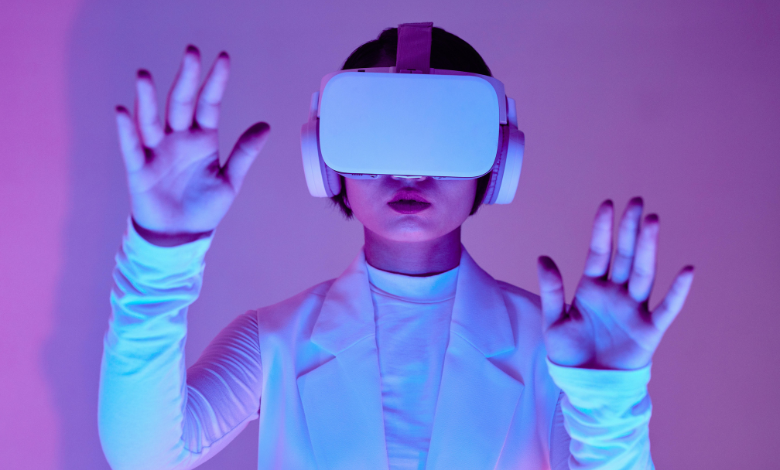Discover how virtual reality exposure therapy helps overcome fears and anxiety with safe, immersive, and effective treatment.
You’re sitting in your living room, headset on, heart racing. In front of you, the image of an aeroplane cabin materializes. Every detail is there: the hum of the machines, the soft chatter of passengers, indeed the slight vibration as the aeroplane takes off. Except, you’re not on an aeroplane at all. You’re in a remedy.
That’s the magic of Virtual Reality Exposure remedy( VRET). Put simply, it’s a way to defy your fears in a controlled, safe, and simulated terrain using virtual reality technology. rather than facing your fear head on in the real world right down, you ease into it through VR, like rehearsing before the real performance.
When I first heard about it, I allowed it to sound futuristic, nearly like wisdom fabrication. But after seeing how it helped someone I know with social anxiety, I realized it’s further real and further life- changing than I ever imagined.
What Exactly Is Virtual Reality Exposure Therapy?
At its core, VRET is a form of exposure remedy that uses virtual reality technology. Exposure remedy itself is a cerebral treatment where people gradually face the situations or objects they sweat, helping them reduce avoidance and make adaptability.
With VRET, rather than physically defying the fear right down, cases use a VR headset that simulates those stressed surroundings. A therapist guides the session, icing the exposure is gradational and manageable.
Think of it like an internal spa. Just as you would lift lighter weights before moving to the heavy bones, VR lets you train your brain step by step before diving your fears in real life.
What Conditions Can VRET Help With?
Virtual reality exposure therapy isn’t just for one type of fear. It is surprisingly versatile. Here are some of the most common conditions it’s used for:
- Phobias: Fear of flying, spiders, heights, needles, driving, or public speaking.
- PTSD (Post-Traumatic Stress Disorder): Especially in veterans or trauma survivors who need safe re-experiencing to process memories.
- Social Anxiety Disorder: Practicing conversations, presentations, or social settings.
- Generalized Anxiety Disorders: Facing everyday stressors in a simulated but safe way.
- OCD (Obsessive-Compulsive Disorder): Controlled exposure to triggering environments to reduce compulsions.
I flash back speaking with someone who had a crippling fear of driving after an accident. Traditional remedies felt abstract to them. But with VR, they sat in a simulated bus, hands on a virtual steering wheel, rehearsing until the fear lessened. Eventually, they got back behind the real wheel. That’s the power of VR.
How Does VRET Work? Step by Step
To make it less mysterious, here’s how a typical session might unfold:
- Assessment and Goal Setting
The therapist talks with you about your specific fear, setting clear goals. For example: I want to fly to visit my family without panic attacks. - VR Setup
You put on a VR headset, analogous to a gaming headset. The therapist selects a virtual terrain acclimatized to your fear, similar as an aeroplane, a social event, or a high- rise deck. - Gradual Exposure
The therapist starts small. However, perhaps the first step is just sitting in a virtual field waiting room, If you sweat flying. Once you’re comfortable, they move to boarding, also take off, and ultimately turbulence. - Therapist Guidance
Throughout, the therapist monitors your responses and trainers you through managing strategies like breathing, reframing studies, or resting exercises. - Repetition and Progression
Like physical training, exposure happens in a small, unremarkable way until your fear response naturally decreases.
It’s a safe sandbox, where mistakes don’t have real-life consequences.
The Science and Proof Behind VRET
Skeptical, You’re not alone. I was too. But there’s growing evidence that VRET is not just hype, it works.
- A 2021 meta-analysis in Frontiers in Psychology found VRET to be as effective as traditional exposure therapy for phobias and anxiety disorders
- The American Psychological Association (APA) recognizes VR as an emerging, evidence-based treatment
- Military programs like the U.S. Department of Defense’s Virtual Iraq project have used VR to successfully treat combat-related PTSD
The success rates vary depending on the condition, but many studies show 60 to 90 percent of patients see significant improvement after structured sessions. In other words, this isn’t just a tech gimmick. It’s a clinically supported tool.
Common Questions About VRET
How Effective Is It Compared to Traditional Therapy?
Exploration shows VRET can be just as effective, and occasionally indeed more accessible, because cases are more willing to try VR than face real- world exposure incontinently. It also allows for customized scripts you ca not fluently replicate in real life, like bluffing turbulence on command.
Is It Safe?
Yes. VRET is generally safe. Some people may feel mild motion sickness, but therapists adjust scenarios to minimize discomfort. The biggest safety net is that you’re in a therapist’s office, not on an actual plane or spider-filled room.
How Much Does It Cost?
Costs vary widely:
- Per session: $100 to $250 on average
- Some clinics offer packages of 8 to 10 sessions
- Costs may be lower if the therapist integrates VR into standard CBT sessions
Is It Covered by Insurance?
Coverage depends on your provider. Since VR is often part of CBT, which is a well-recognized therapy, some insurance plans do cover it. However, not all do, so it’s worth asking your provider directly.
Where Can I Find a Provider?
- Look for licensed therapists specializing in CBT who mention VR in their practice
- Use directories like Psychology Today or telehealth platforms
- Some newer apps and at-home VR options are emerging, though working with a trained therapist is recommended for serious conditions
The Human Side: Stories That Matter
I’ll never forget when a close friend of mine, let’s call her Anna, confessed her fear of public speaking. She avoided promotions at work just to stay away from presentations. Her therapist introduced her to VRET.
Anna practiced in VR, facing a virtual boardroom with avatars watching her every move. At first, her hands shook. But after a few weeks, she was cracking jokes in VR like a pro. The real test came when she presented at a company meeting and nailed it.
That’s the real beauty of VRET. It doesn’t just reduce fear, it gives people their lives back.
What to Ask Before Trying VRET
If you’re considering this therapy, here’s a quick checklist to bring to your first consultation:
- Is the therapist licensed in CBT or exposure therapy?
- What VR software and equipment do they use?
- Have they treated cases like mine before?
- How many sessions do they recommend?
- What coping strategies will I learn alongside VR?
This ensures you’re not just stepping into technology, but into a proven therapeutic relationship.
Taking the First Step Toward Freedom
Fear and anxiety can feel like unnoticeable walls holding us back from life. Whether it’s the buzzing anxiety of a social event, the pulsing fear of heights, or the haunting recollections of trauma, those walls are real. But they do n’t have to stay that way.
Virtual reality exposure remedy offers a doorway. Not an instant cure, but a safe, guided, and substantiation- grounded path forward.
Still, perhaps this is it, If you’ve been staying for the right moment to reclaim your freedom. Perhaps your first step starts not in the real world, but in a virtual bone.
Final Thoughts
When I think back to that first moment of sitting in a VR headset, I realize commodities are important. Facing fears is n’t about springing off the edge each at formerly. It’s about inching forward, step by step, until the edge no longer feels so scary.
Additional Resources
- Using Virtual Reality Exposure Therapy to Enhance Treatment of Anxiety Disorders: A detailed review of how VRET augments conventional exposure therapy, discusses mechanisms like immersion and presence, and surveys clinical trial evidence.

















